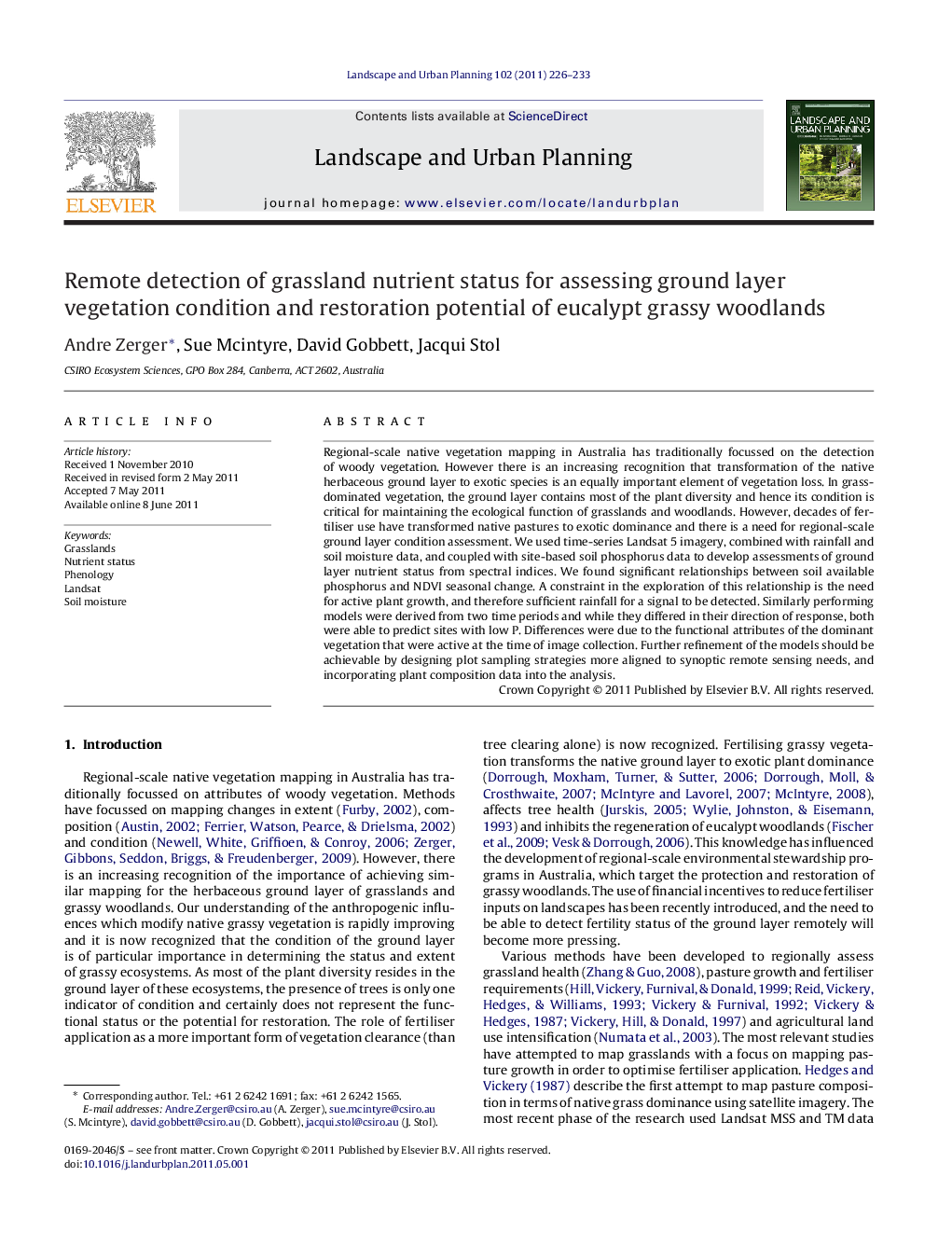| Article ID | Journal | Published Year | Pages | File Type |
|---|---|---|---|---|
| 1049708 | Landscape and Urban Planning | 2011 | 8 Pages |
Regional-scale native vegetation mapping in Australia has traditionally focussed on the detection of woody vegetation. However there is an increasing recognition that transformation of the native herbaceous ground layer to exotic species is an equally important element of vegetation loss. In grass-dominated vegetation, the ground layer contains most of the plant diversity and hence its condition is critical for maintaining the ecological function of grasslands and woodlands. However, decades of fertiliser use have transformed native pastures to exotic dominance and there is a need for regional-scale ground layer condition assessment. We used time-series Landsat 5 imagery, combined with rainfall and soil moisture data, and coupled with site-based soil phosphorus data to develop assessments of ground layer nutrient status from spectral indices. We found significant relationships between soil available phosphorus and NDVI seasonal change. A constraint in the exploration of this relationship is the need for active plant growth, and therefore sufficient rainfall for a signal to be detected. Similarly performing models were derived from two time periods and while they differed in their direction of response, both were able to predict sites with low P. Differences were due to the functional attributes of the dominant vegetation that were active at the time of image collection. Further refinement of the models should be achievable by designing plot sampling strategies more aligned to synoptic remote sensing needs, and incorporating plant composition data into the analysis.
► Significant relationships between soil phosphorous (fertilizer use) and NDVI seasonal change at landscape scales was found. ► Methodology requires active plant growth driven by rainfall and soil moisture. ► Model differences were due to functional attributes of vegetation that were active at the time of satellite image collection.
